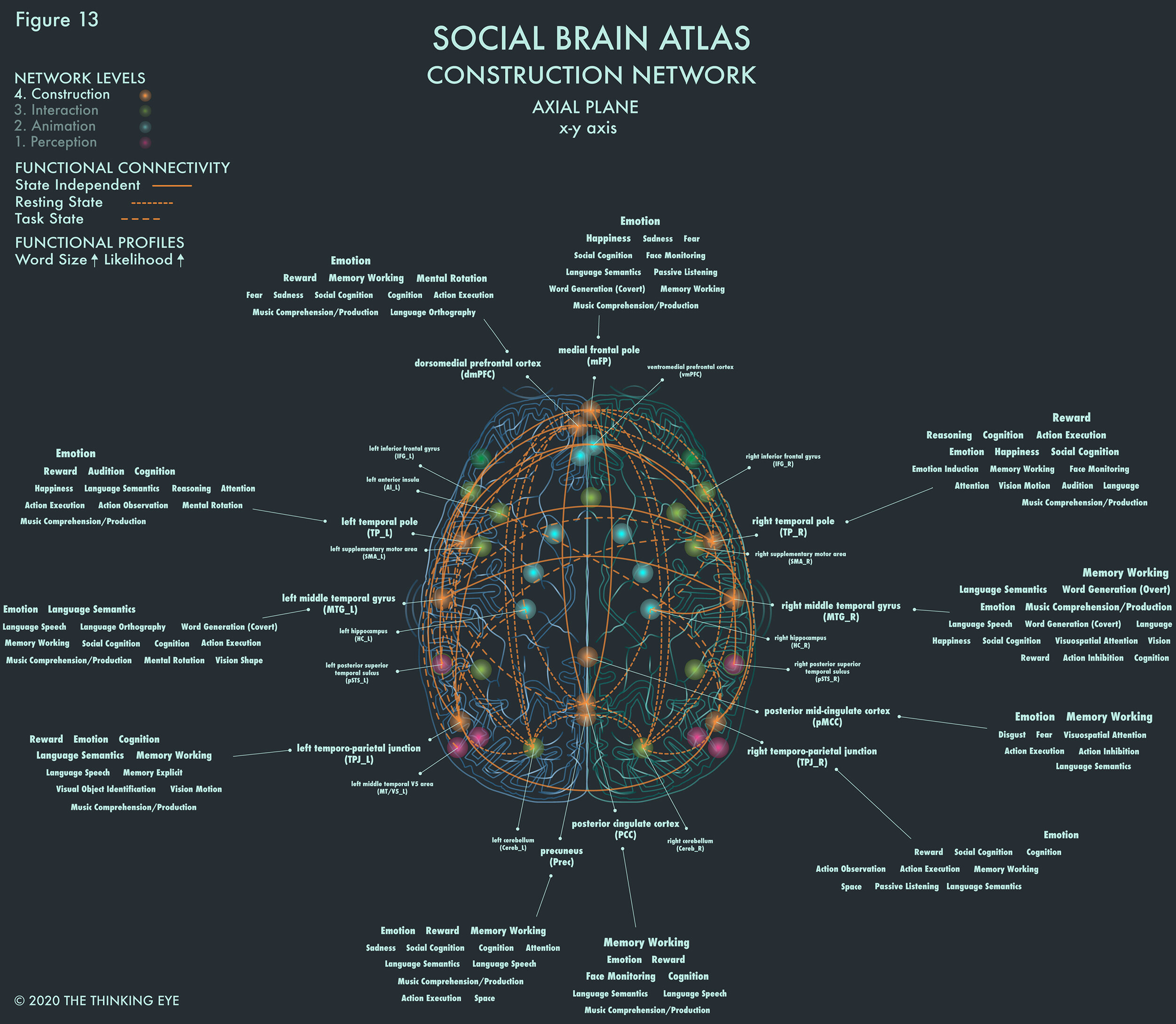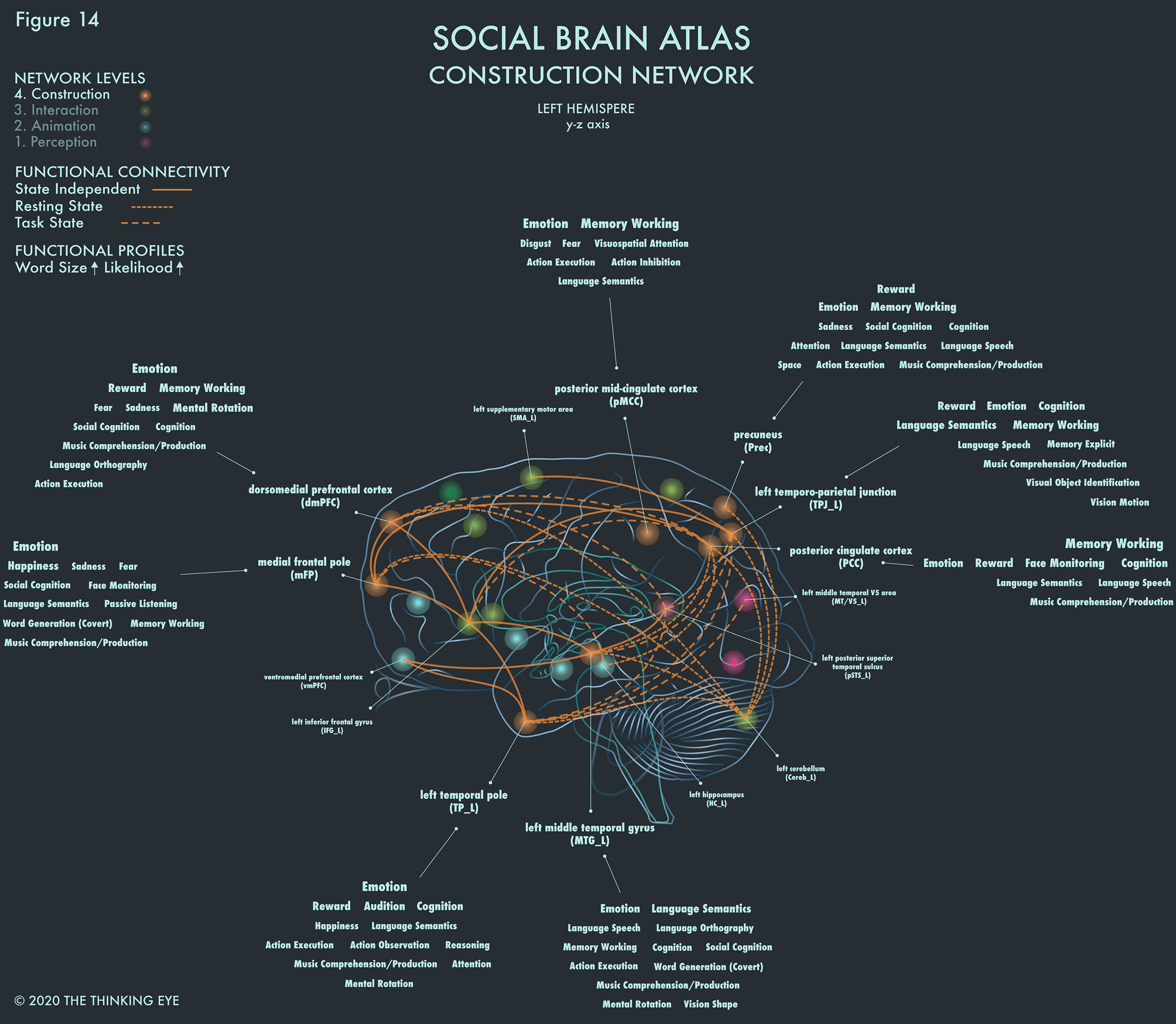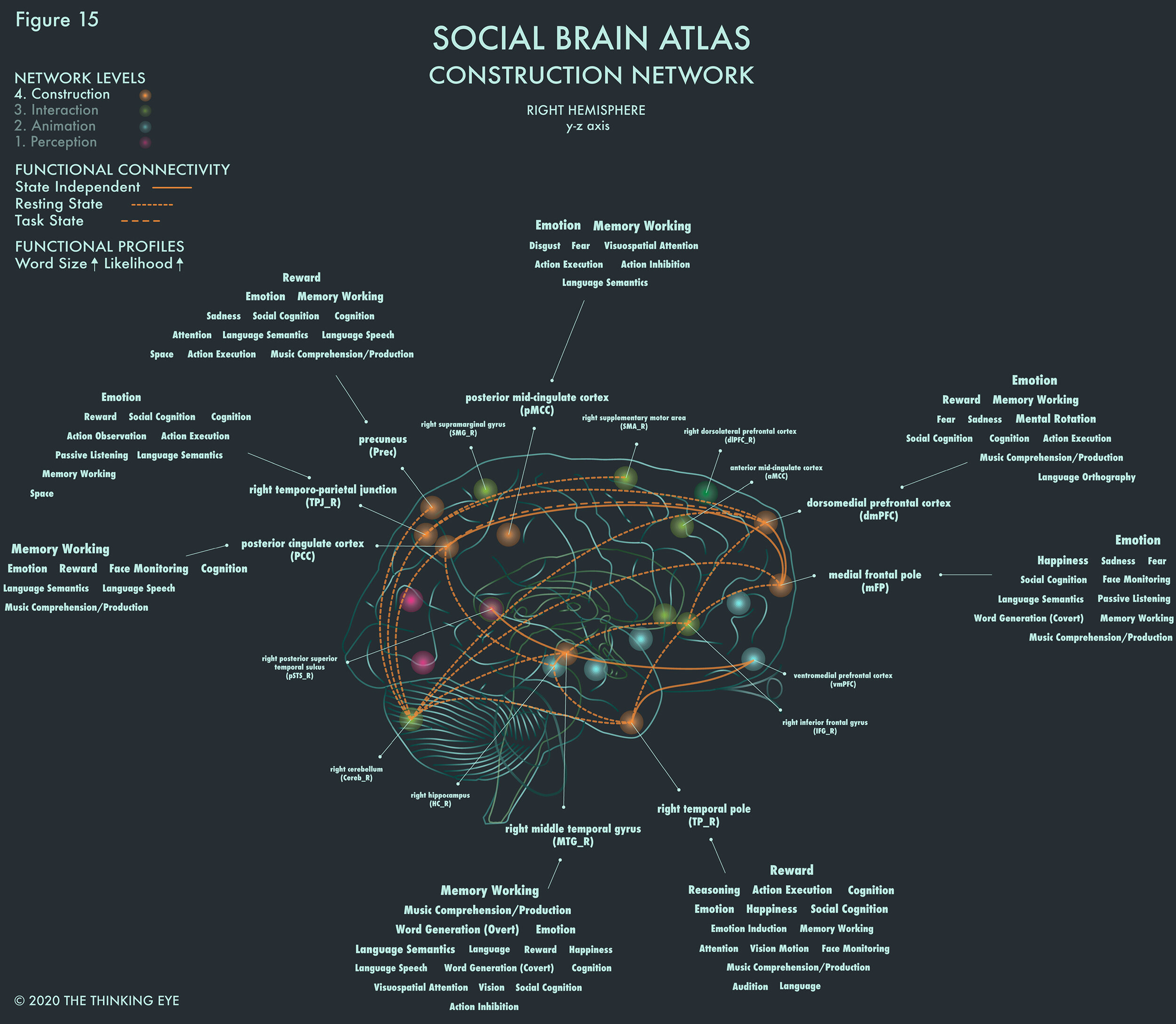THE ARTISTIC & SOCIAL BRAIN ATLAS
The Artistic Brain Atlas shows how art engagement and production recruit the same brain networks as complex social behaviour. The atlas was created by mapping seminal neuroimaging studies on art and creativity onto the social brain connectome — the most comprehensive diagram of the neural dynamics that regulate human social cognition to date (Alcalá López et al., 2017.)
See also: More Than Meets the Eye: Art Engages The Social Brain, published in Frontiers in Neuroscience, 25 February 2022. https://doi.org/10.3389/fnins.2022.738865
NETWORK LEVELS
1. Perceptual analysis (Perception Network). This process is generic to a broad range of complex visual phenomena but the coding of featural and spatial relations between constituents of a particular visual artwork and relations between artworks in a physical space have analogies to parsing complex social ‘scenes’ - especially the coding of (potential) sensory ambiguity and incongruity, which are integral both to art and inter-personal interactions.
2. Animating dynamics (Animation Network). Artworks, like people, are highly affectively laden sensory objects and demand a ‘creative’ orientation: i.e., the imagining and selection of potential responses, modulated by prior familiarity and potential emotional and reward value. This processing is rapid and intrinsically active (since artworks and persons generally must be processed in a context or ‘scene’ that is assigned by the perceiver based on previously experienced similar spatiotemporal configurations), dynamic (since emotional and hedonic context is frequently in flux) and entails novelty (since our responses to artworks, as to other people, are challenging to predict a priori). This processing is also integral to our subjective ‘aesthetic sense’ when engaging with art.
3. Interactive significance (Interaction Network). How a viewer engages with an artwork depends fundamentally on stored norms – concepts and ‘rules’ derived implicitly through accumulated past experience of the art of a culture - as well as its perceived beauty and the viewer’s own inner homeostatic state and current behavioural priorities. Analogous operations are engaged when we comprehend and evaluate the behavioural signals of other people. Norm conformation and violation determine the relative ‘salience’ of an artwork viewed among other artworks (or non-artistic objects); and salience coding by the Interaction Network is in turn integral to our affective and symbolic appraisal of artworks as well as artistic creativity.
4. Symbolic and personal meaning (Construction Network). Artworks, like people, convey states of mind that must be decoded. In addition to the mental states represented by artworks in themselves, they embody the intent of the artist in creating them. Interpreting these mental states is integral to the appreciation of meaning in any artwork and is likely to engage neural operations that mediate’ theory of mind’, by constructing a mental model or narrative of others’ mental states: a core process of social cognition. Indeed, art could be considered a window on the brain’s internally generated models of feeling states.
5. Generation of an integrated response (Cross-Network). An individual’s personal engagement with and appreciation of the ‘meaning’ of an artwork are likely to depend on a complex and dynamic interplay between past experience, expectation and novelty (‘surprise’). These factors will also affect the pleasure the individual takes in the artwork. The individual’s final cognitive and affective response to the artwork will depend on integrated neural activity across the artistic brain connectome.
ARTISTIC BRAIN ATLAS

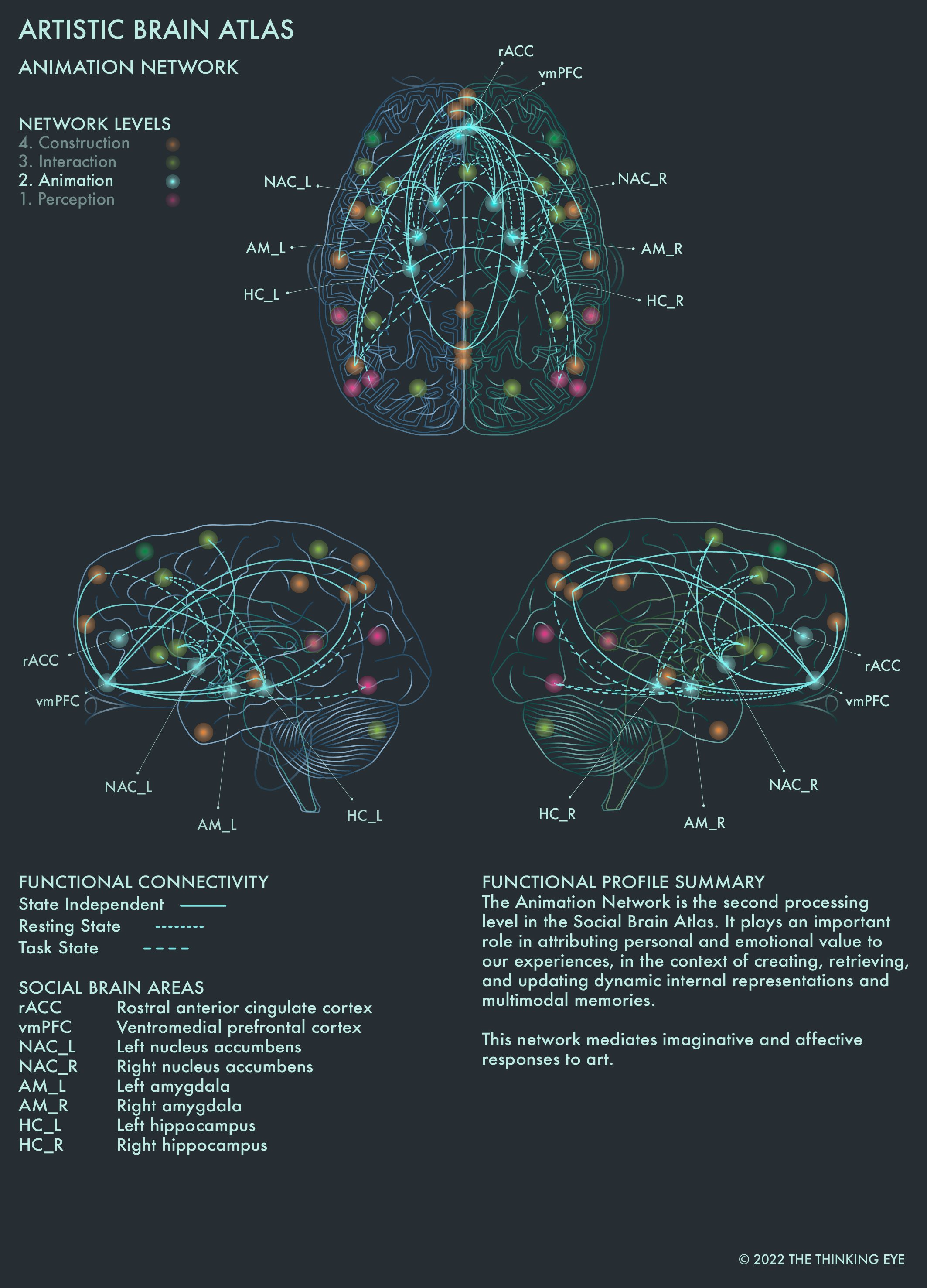
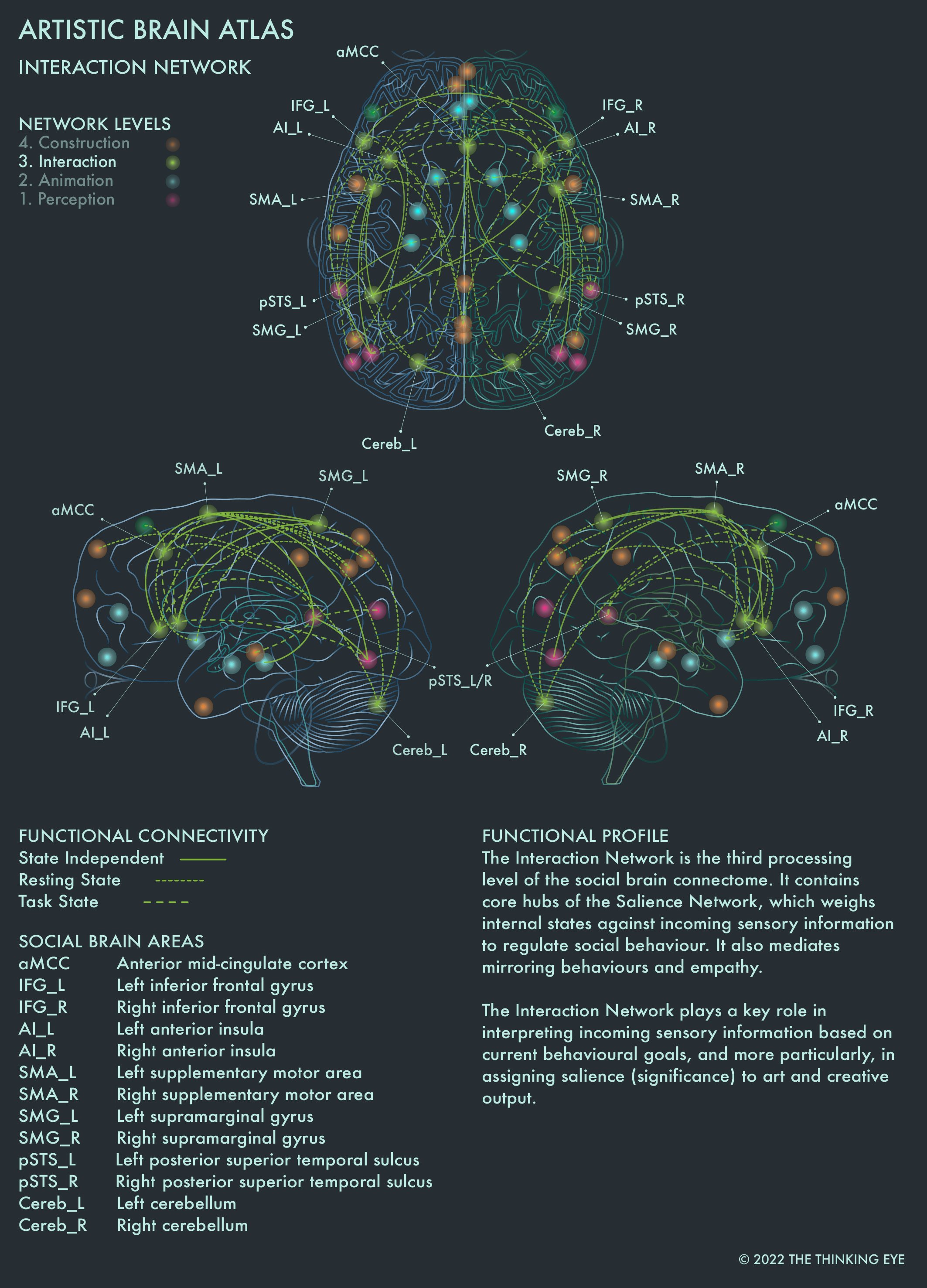
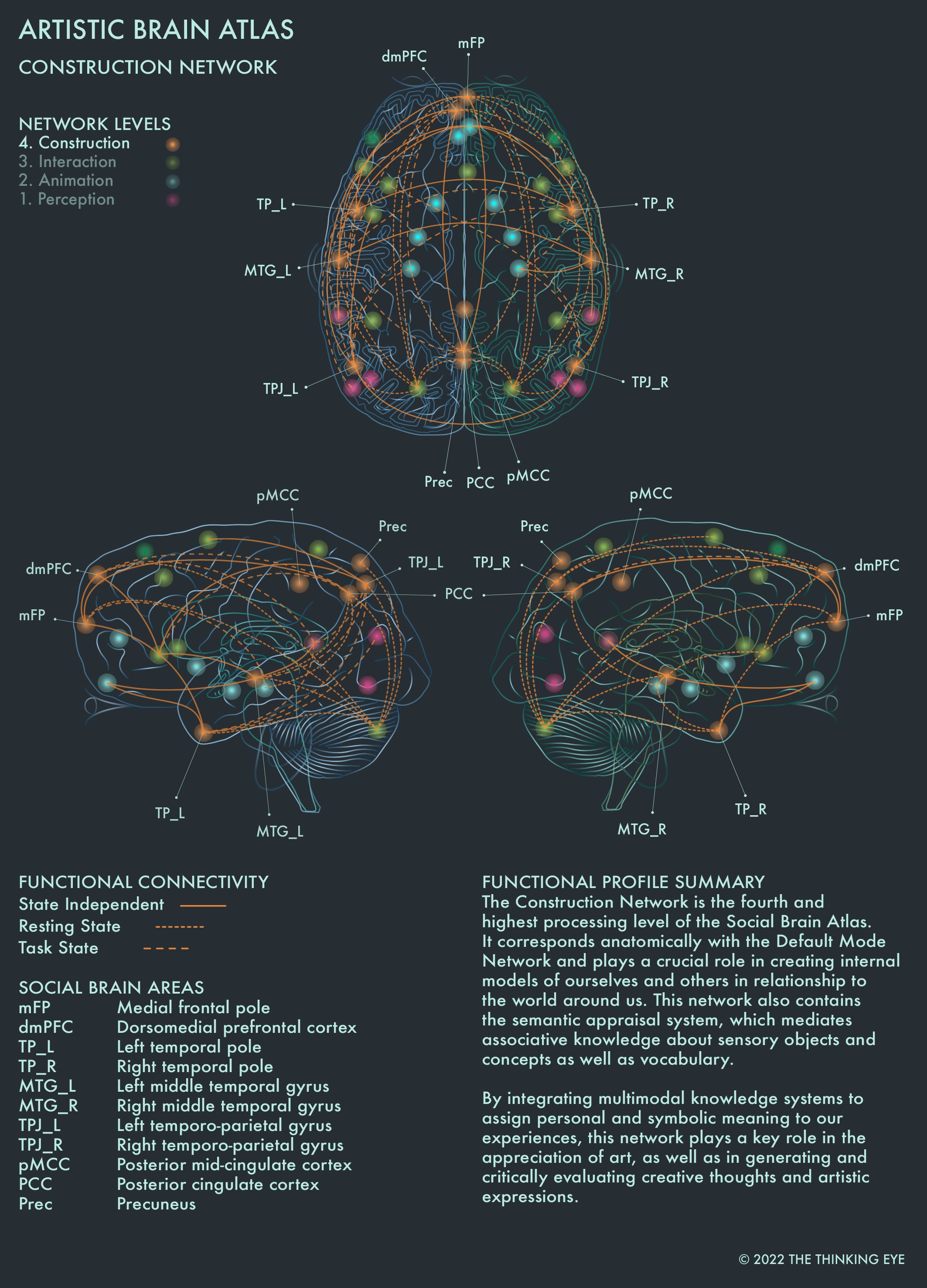
FUNCTIONAL PROFILES OF THE SOCIAL BRAIN
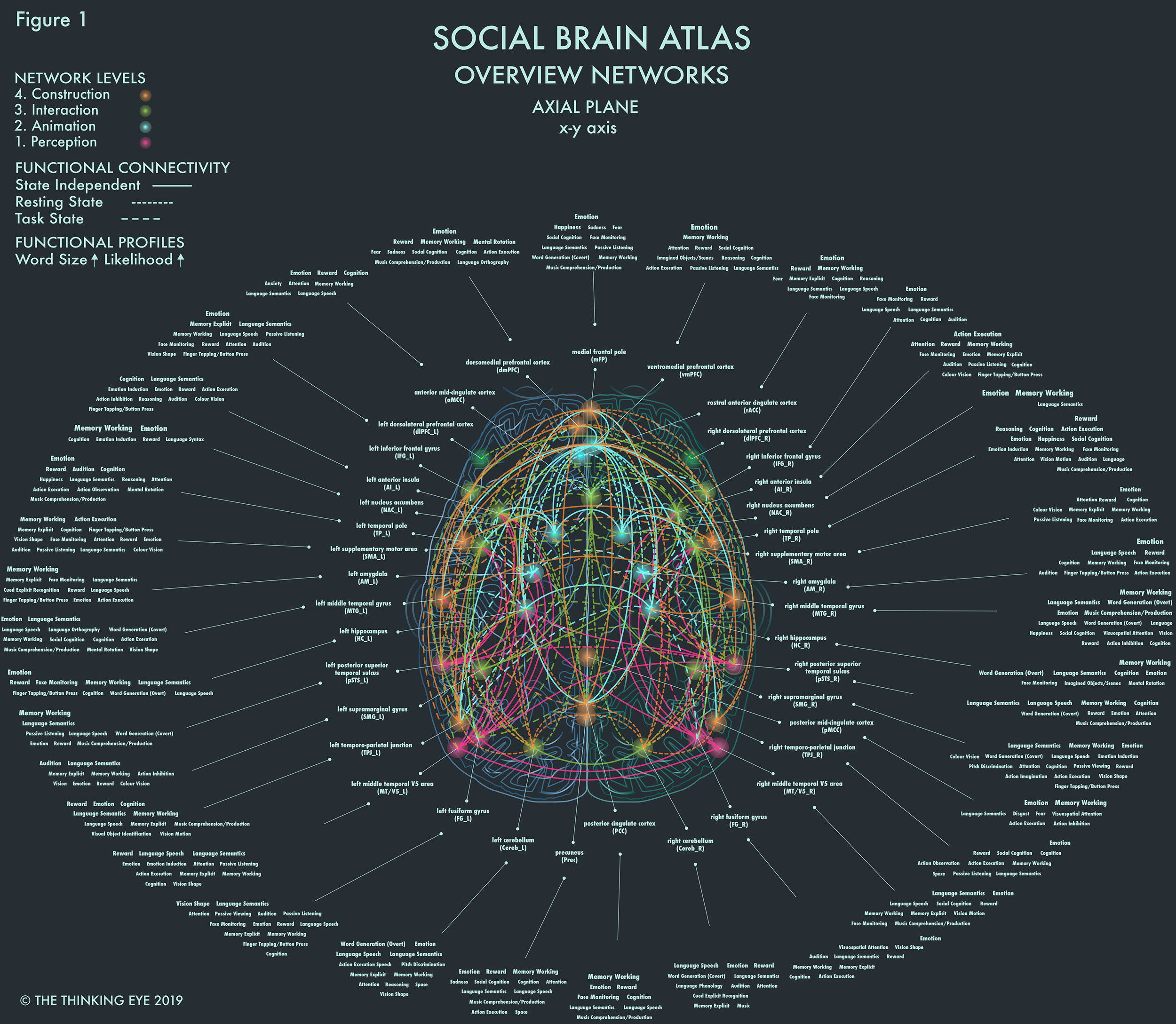
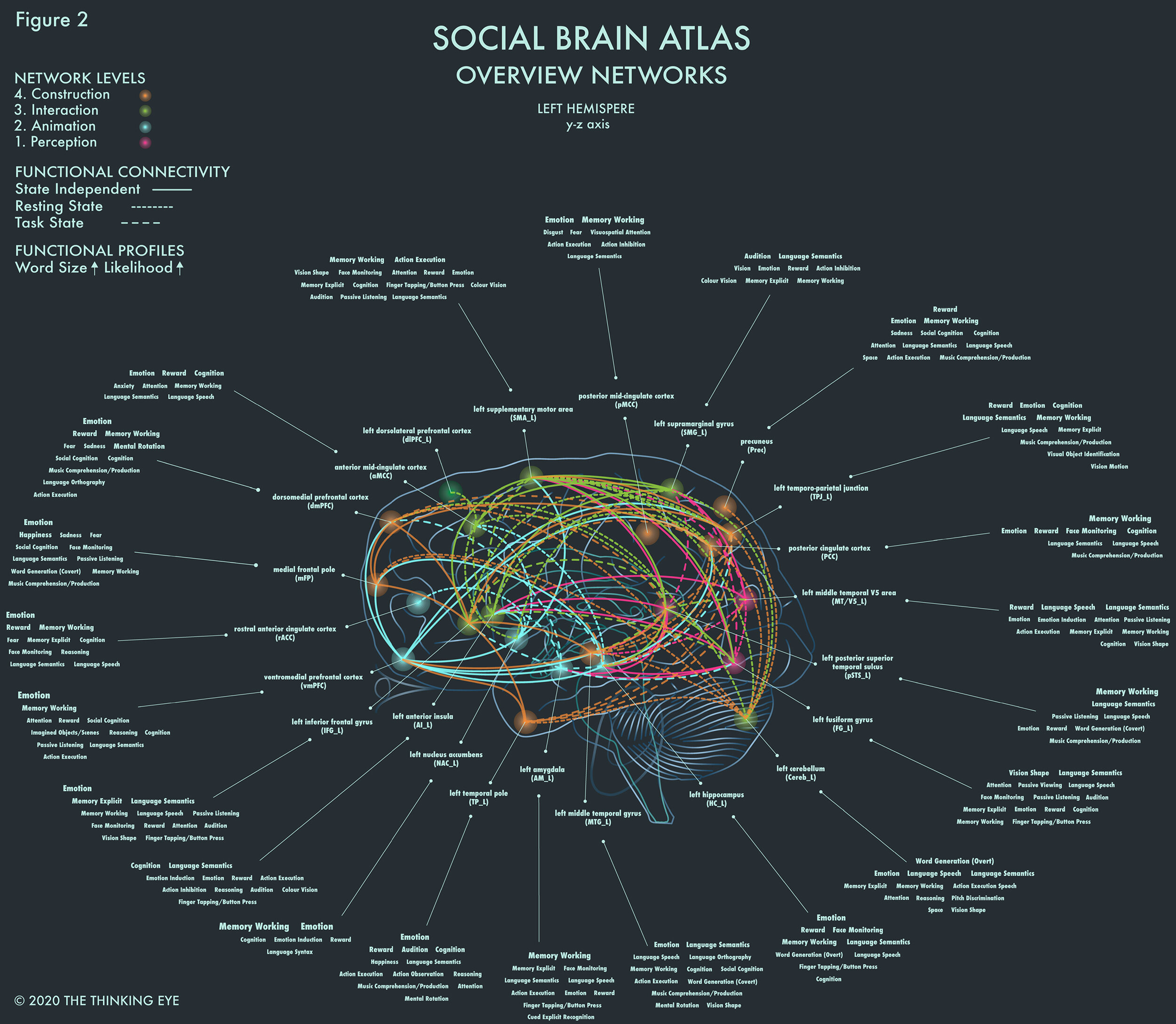
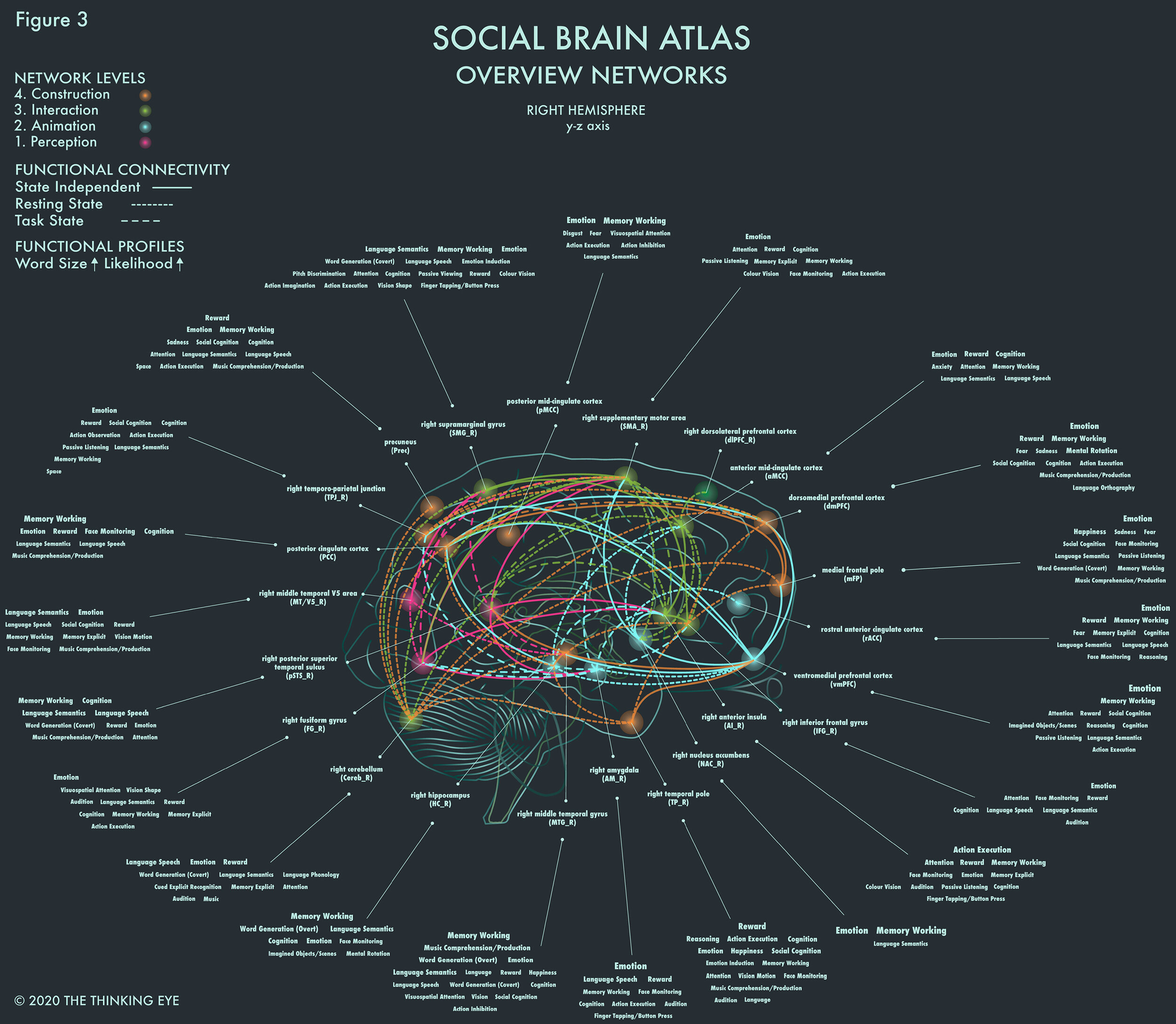
1. Perception Network
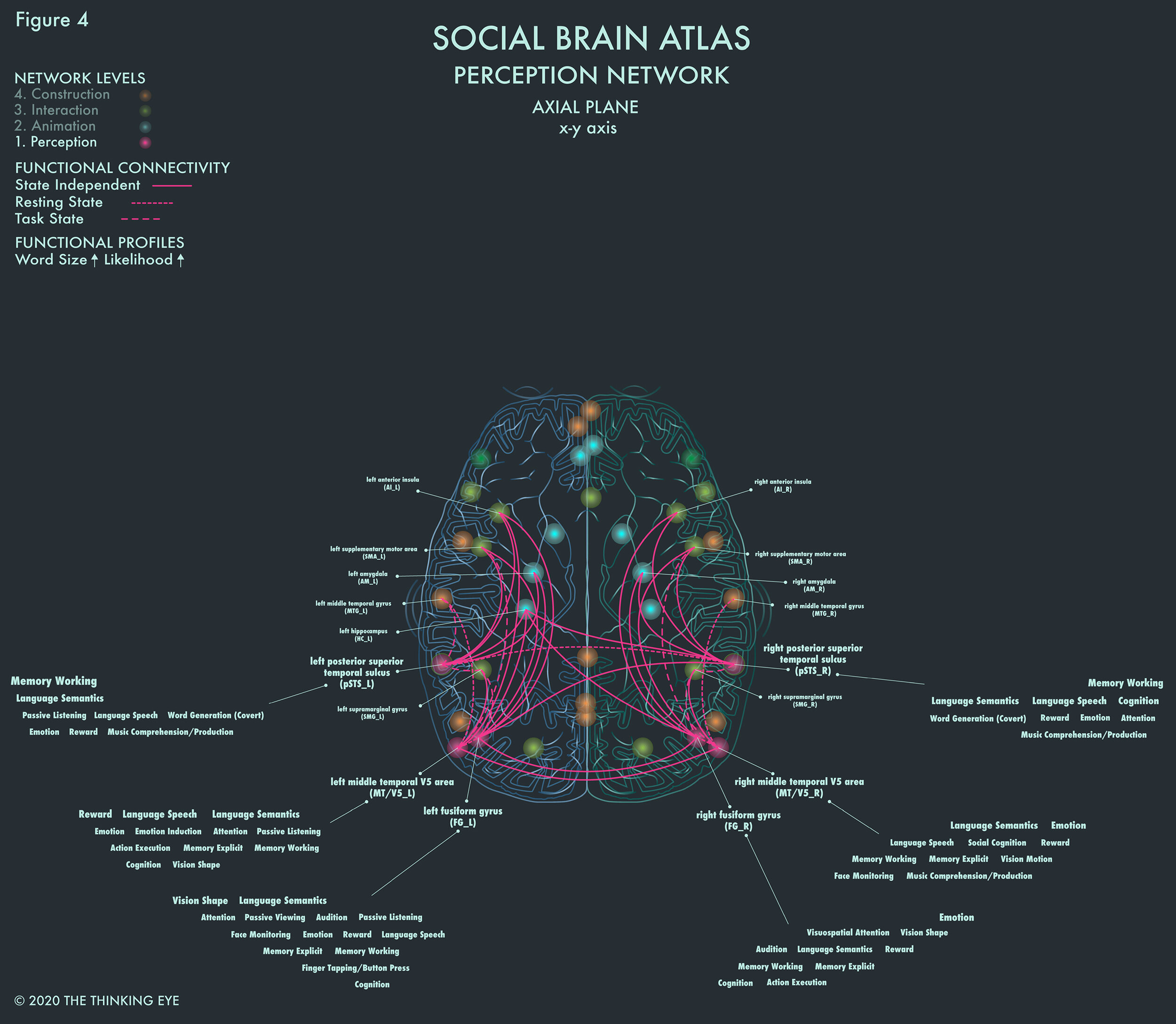

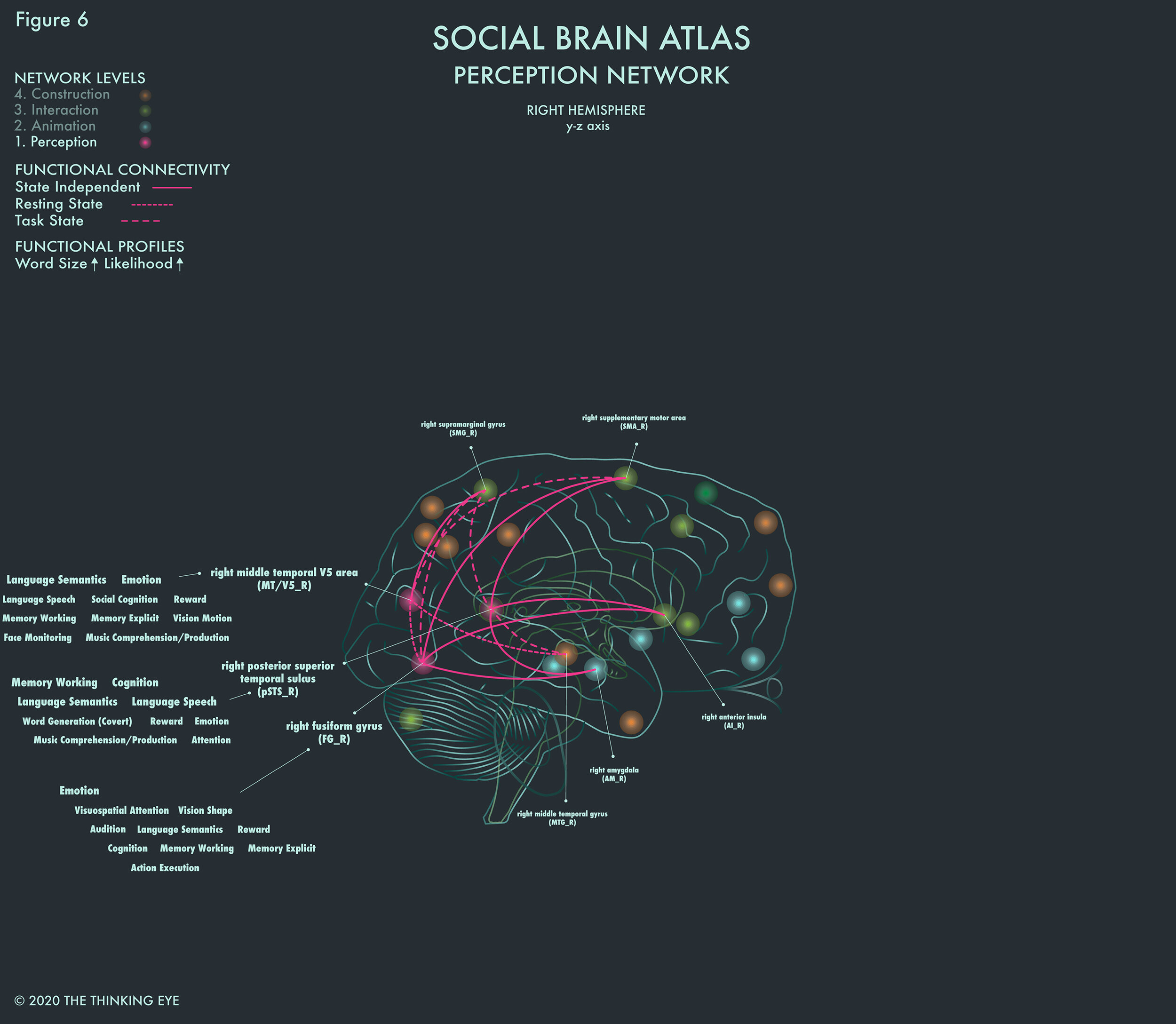
2. Animation Network
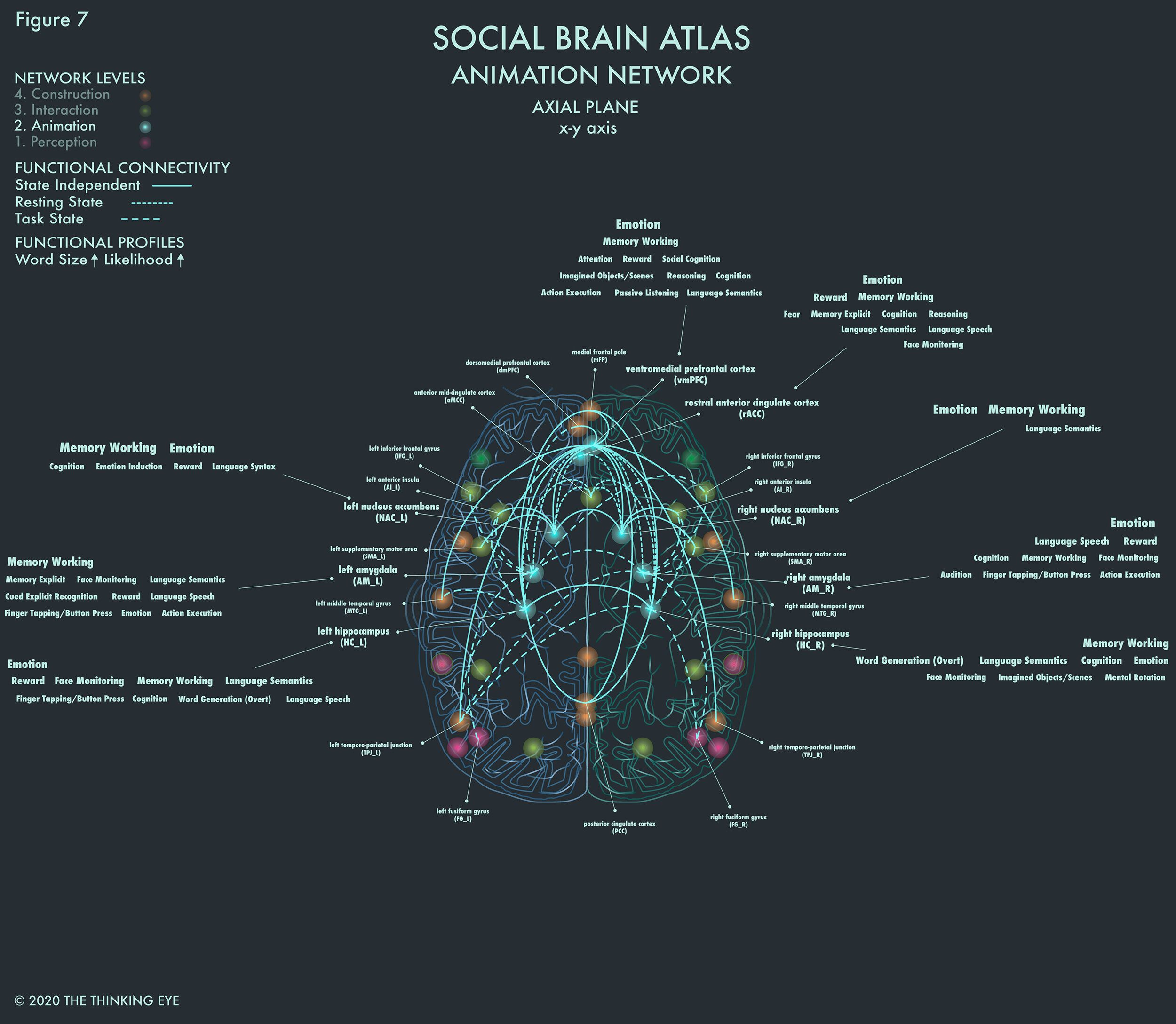
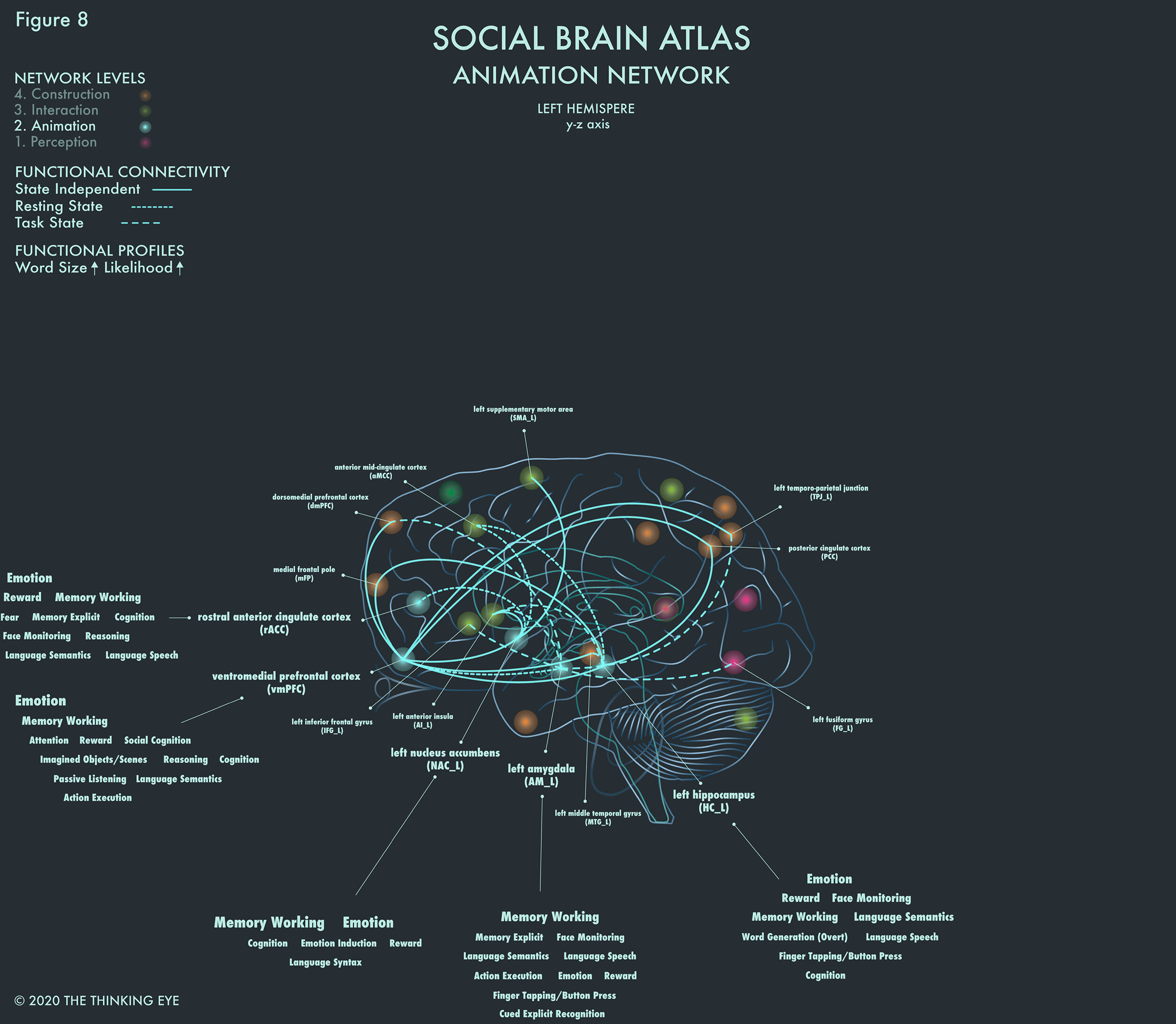

3. Interaction Network
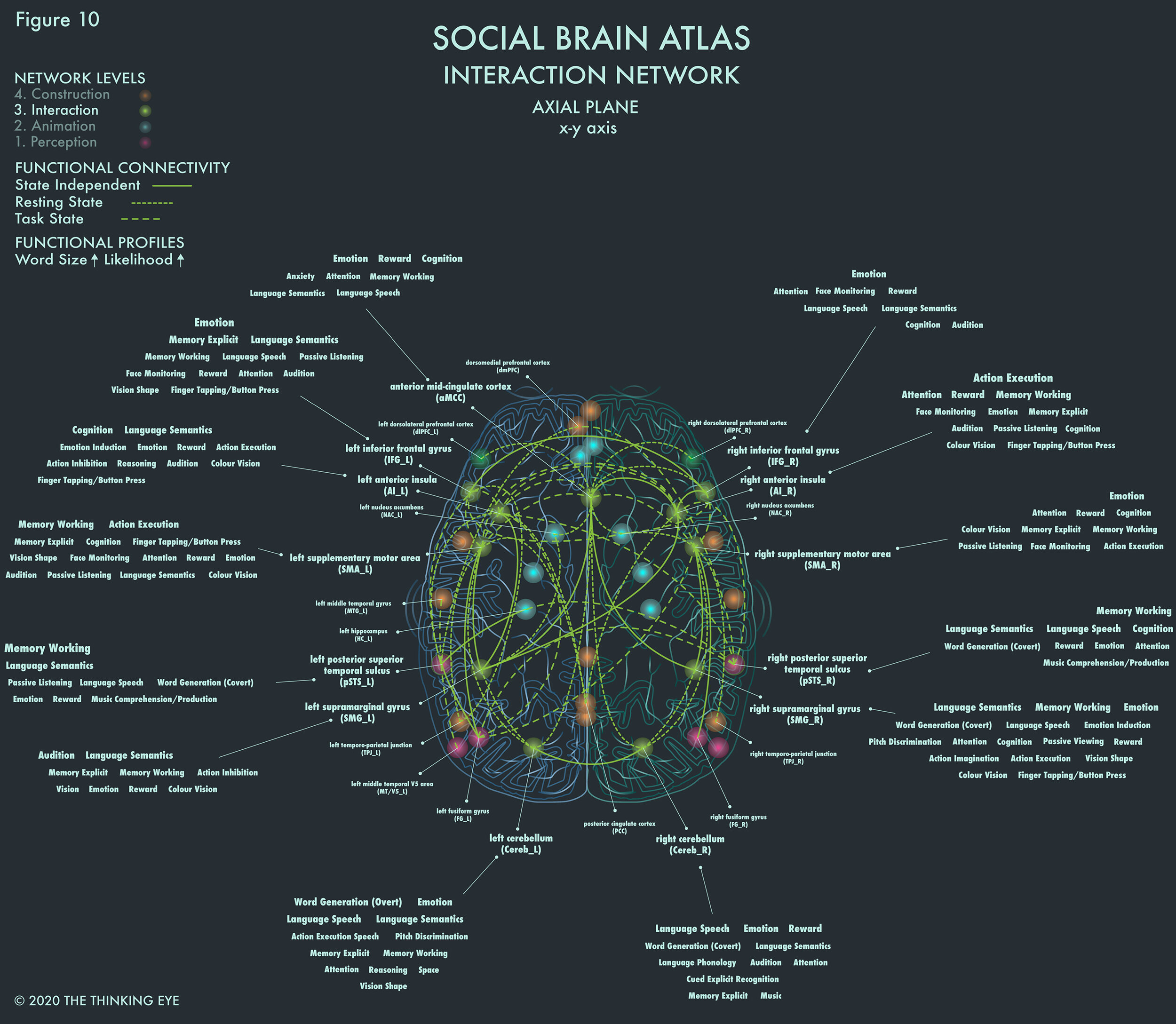
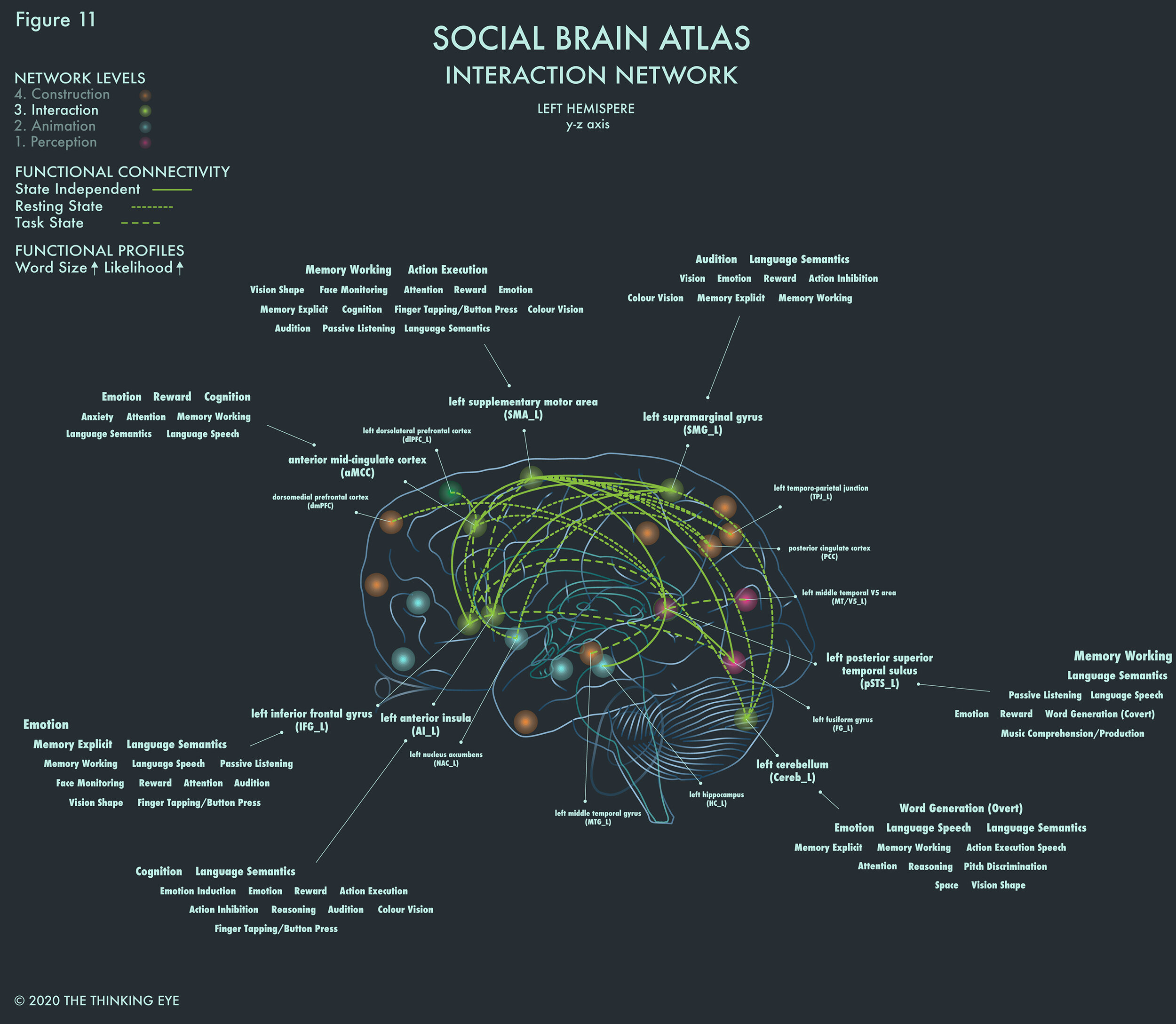
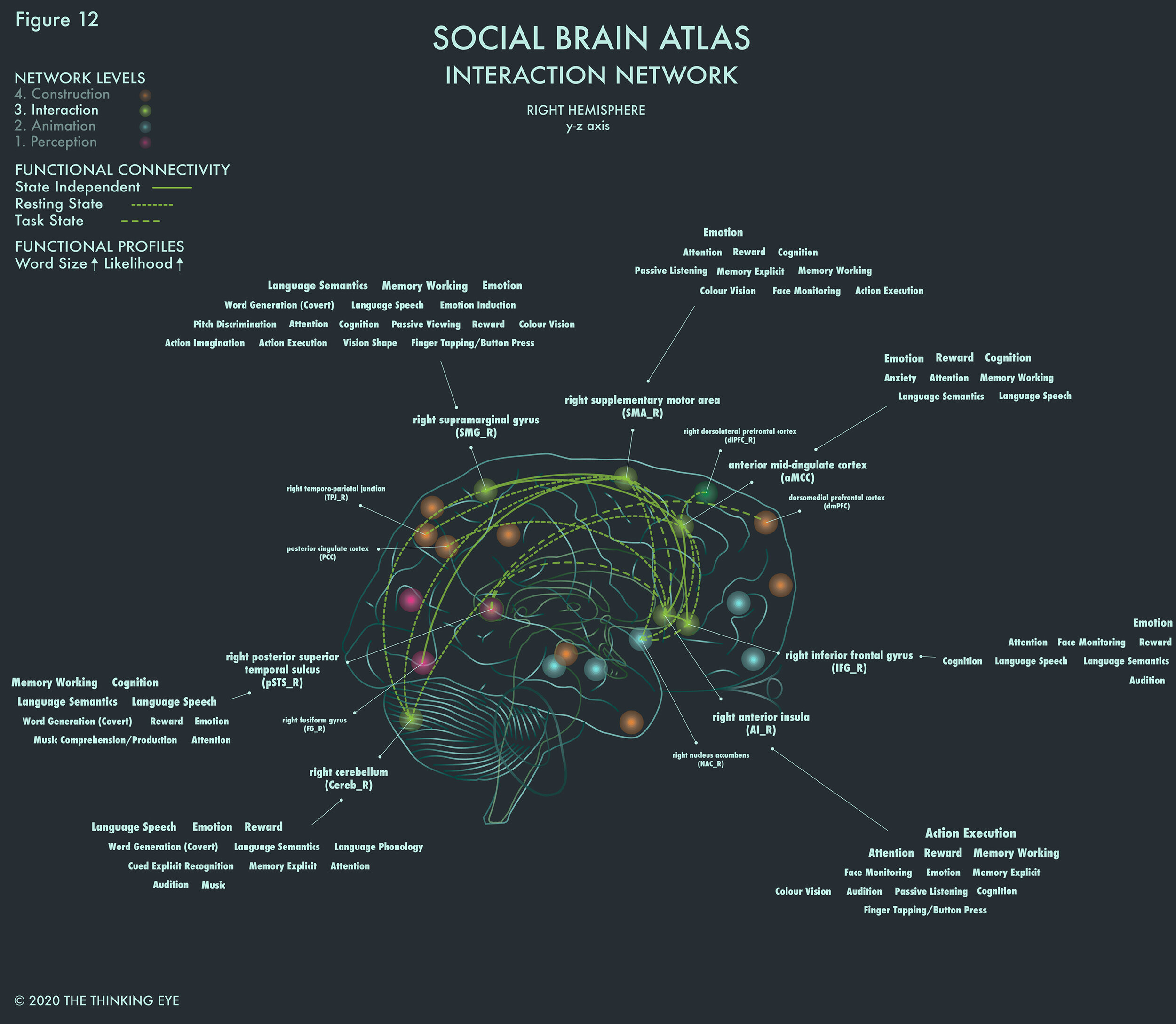
4. Construction Network
